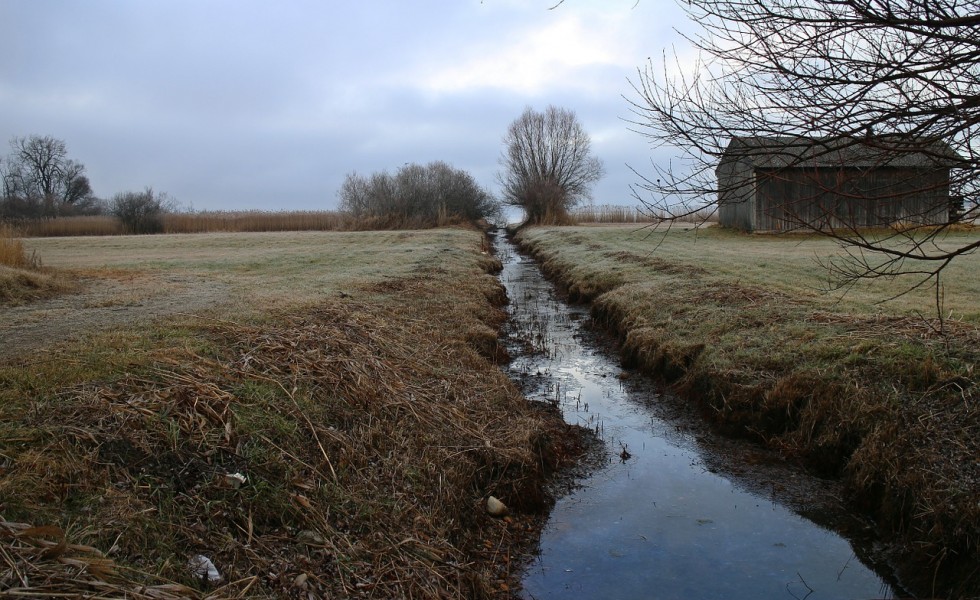Corporations Have Rights; Why Not a Lake?
Posted on April 10, 2019

If the ballot box is the ultimate source of power in the United States, then voters in Toledo, Ohio, used that power Feb. 26 to create what’s now being called a “Bill of Rights” for their wide, blue neighbor, Lake Erie.
That vote, if it withstands court challenges (one was filed immediately after the referendum passed) gives any Toledo citizen legal standing to sue any person or corporation on behalf of Lake Erie over its “right” to be clean and environmentally healthy.
Lake Erie’s newly conferred/newly challenged rights have farmers in northwest Ohio deeply concerned because they have long been seen as a key source of the phosphorus run-off that fuels late-summer, toxic algae blooms in the lake, that also serves as Toledo’s public water source.
But it’s not just Toledo. The toxic blooms, according to press reports, threaten the water supply of 12 million American and Canadian citizens living near Lake Erie and jeopardize more than $1 billion a year spent in Ohio on lake tourism.
Those are big numbers and big threats to everyone, including Big Ag. Still, and quite unusually,farm groups offered no organized resistance to the Toledo ballot initiative, says Ohio Farmers Union President Joe Logan.
“Everyone on both sides of the vote tried to keep it under the radar, assuming it wouldn’t pass. But lightening struck and, boom, it passed.”
The low-key campaign did result in a low voter turnout; only nine percent of all eligible Toledo voters went to the polls. The final tally, however, was anything but slim: a 9,867-to-6,211 victory for LEBOR, or the “Lake Erie Bill of Rights.”
Despite that sizable win from just a slim slice of voters, LEBOR raises almost as many new issues as it tried to address.
First—and this is the core argument of the federal lawsuit filed against LEBOR the day after it passed—do voters acting within “local community self-government” hold the constitutional power to confer “community rights” on, say, “nature?” asked attorneys in the Ohio State University Extension Service (OSU) in a detailed bulletin prior to the vote.
That one question puts into play two tenets honored by most farmers and almost every farmgroup. First, local voters know best and, second, farmers are “the first environmentalists.” Big Ag’s rapid expansion and its increasing vertical integration have stretched both beliefs beyond their traditional meaning.
For example, some states (Illinois is one) do not permit “local community self-government” to rule—or, equally important, overrule—where farmers and corporations site concentrated animal feeding operations (CAFOs). That power is specifically reserved for state regulatory agencies, not township or county boards.
Also, Big Ag’s use of its political and economic might to influence environmental standards in the legislative process and the courts is being challenged by a younger, more politically-adept generation unafraid to join or finance fights over water quality and climate change because both are seen as critical issues facing them and their children.
Proof of these quality-of-life efforts abound from Spokane to Toledo, related the OSU Extension attorneys in their pre-vote bulletin on “The Lake Erie Bill of Rights Ballot Initiative.”
What the attorneys also make clear, though, is that “courts have routinely refused to enforce provisions” such as LEBOR because “the community rights proposals violate long standing legal doctrines regarding federal supremacy over states, state supremacy over local governments, and constitutional rights given to corporations.”
That means “(I)t is likely that an Ohio court would not enforce or uphold a LEBOR action.”
Still, argues Logan of the Ohio Farmers Union, “It is important for (LEBOR) to go to court because, if we’re for local control as we say, we should at least try to provide a rational approach that gives authority back to local communities over issues that deeply affect them.”
It’s a fair point, and one that will remain until voters—with assistance from the courts—claw back some control over how today’s agriculture grows the food everyone eats.
Before then, of course, we could all talk somewhere other than a courtroom.
© 2019 ag comm
Share This